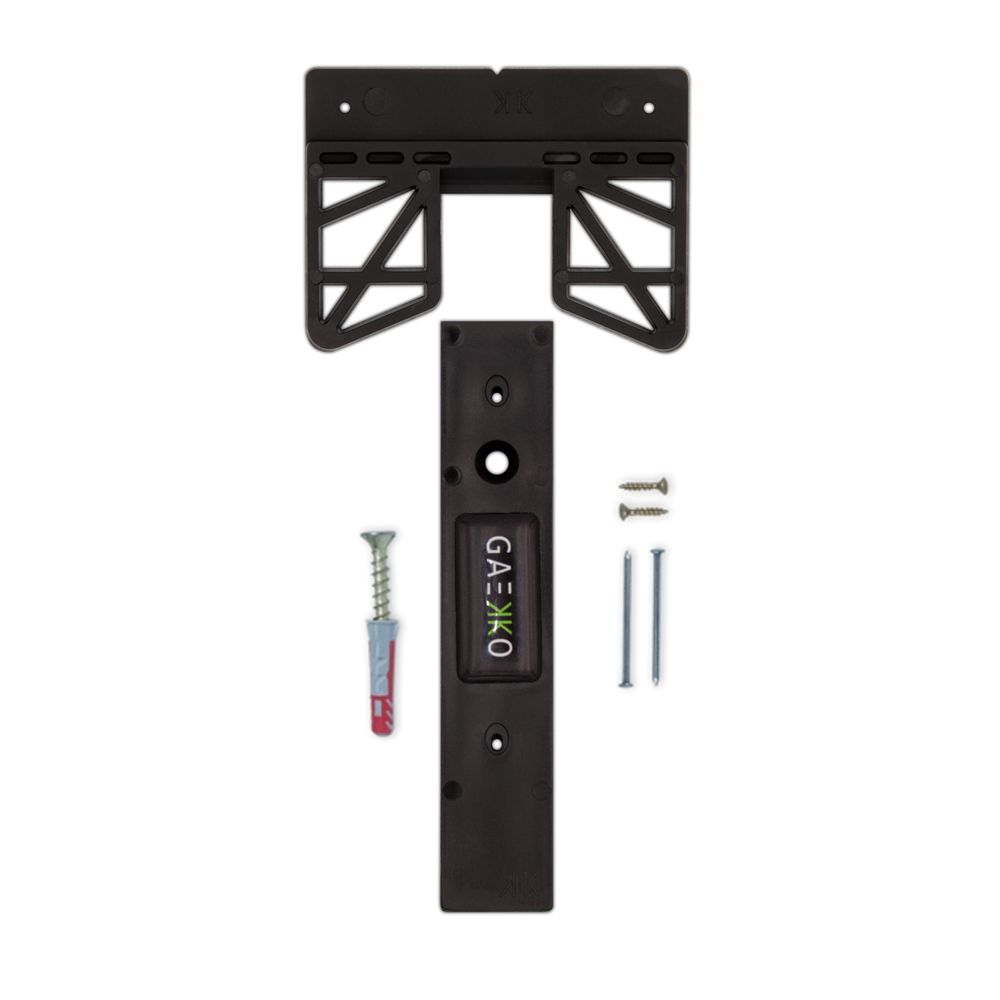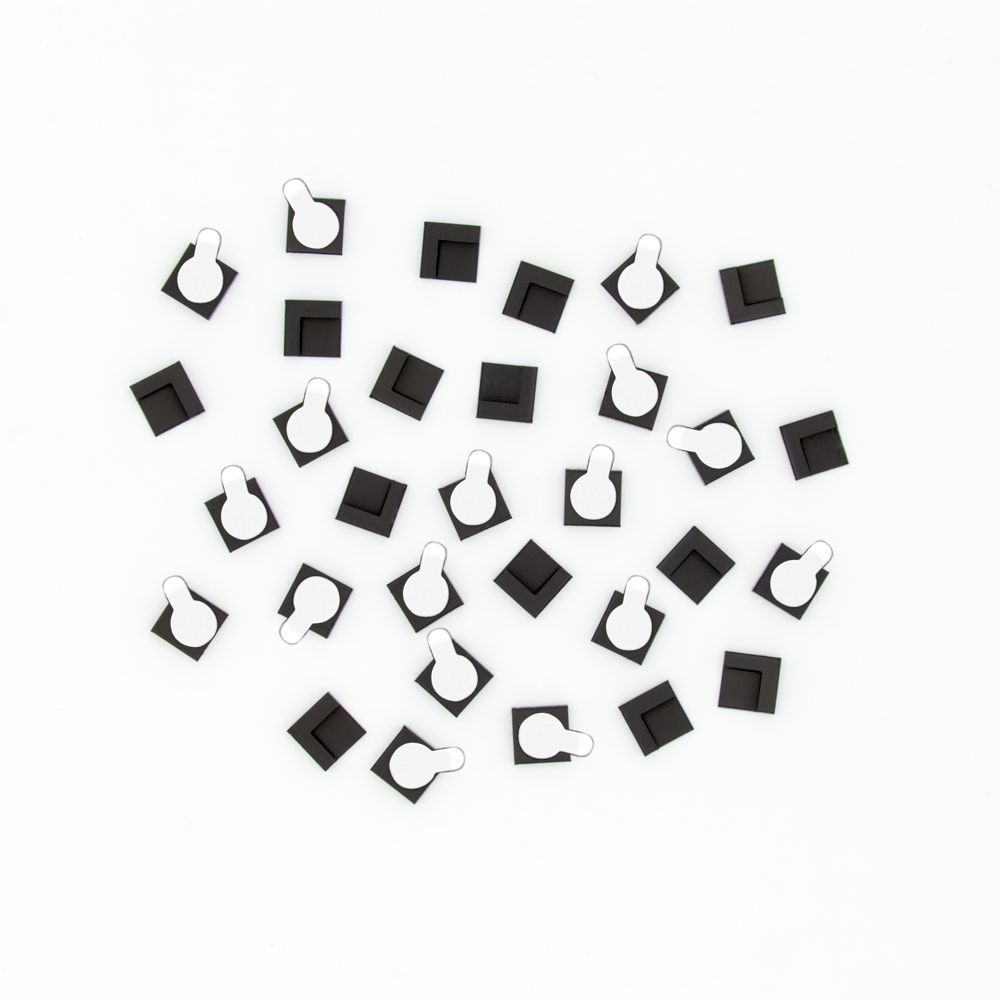Table of Contents
Our hangers for an ideal picture height
At what height should I hang my picture on the wall?
The question may sound rather banal. However, the height at which you hang your picture on the wall depends on several factors and therefore cannot be determined across the board. First of all, the question depends on what kind of picture you want to hang on the wall. Is it a canvas picture, an alu-dibond picture or a picture behind acrylic glass or a picture frame? Maybe you just want to hang beautiful photos and postcards on your wall?
The perfect height of your mural in the room therefore always depends on the size and shape of the picture. In addition, the furnishings and your flat play a significant role in the perfect placement of your pictures. In an old flat with high ceilings, you have considerably more options than in a modern new flat with a standard ceiling height.
Last but not least, the perfect height of the pictures also depends on the other furnishings in your flat. Therefore, you should always include other furnishings in your considerations for the perfect picture height.

Determine the right height for your picture!
A general rule of thumb is that you should hang the centre of your picture at about eye level. This is the case at a height of about 1.60 metres. The rule of thumb in museums, by the way, is that the centre of the picture should be at a height of 1.45 to 1.60 metres. Ideally, therefore, one third of your picture should be above eye level and two thirds below. But of course, the exact height at which you hang your artwork also depends on your personal size. In a child’s room, for example, you should adjust the ideal height of the pictures to the height of the children’s eyes. Therefore, make sure that you do not hang the pictures too high 😉 .
Our tip: When sitting on the sofa in the living room, we recommend a lower height than when standing in the hallway. In this case, you should fix the lower edge of your picture frame about 20-30 cm above the seat of your sofa.
Adjust the height of your picture to the conditions in your room!
Rules are made to be broken. Therefore, you should not always rigidly follow the rule of thumb described above. First consider your room and look at other furnishings that you could take into account when hanging pictures. For the perfect height, also consider other edges in your home, such as windows, doors, furniture or even the floor. The proportions of your pictures play a decisive role for a harmonious and calm hanging.
Tips: You want to hang your picture near a door? For reasons of harmony, you can have your mural flush with the top edge of the frame of the door or room transition, for example. Other possible landmarks for the orientation of your mural can be, for example, a tiled stove, a chest of drawers or cupboard, but also a window. Just as you colour-coordinate your furniture and decorations, you can do the same with pictures and walls. However, if you hang your murals near a window, make sure that you do not expose them to direct sunlight in rooms flooded with light, otherwise they will fade quickly.
As a general rule, larger picture frames look their best above large wooden chests of drawers, while smaller frames look perfect next to a small side table. Another rule of thumb is that your picture frame should be no wider than 2/3 to 3/4 of the width of your piece of furniture. In addition, your decoration should harmonise with the pictures you hang, whether with or without frames. A strictly geometric hanging, for example, requires clear and structured decoration. However, if you decorate your home in a more colourful way, your hanging can also be much less structured and you can combine many different pictures, whether with or without frames, with the right spacing.
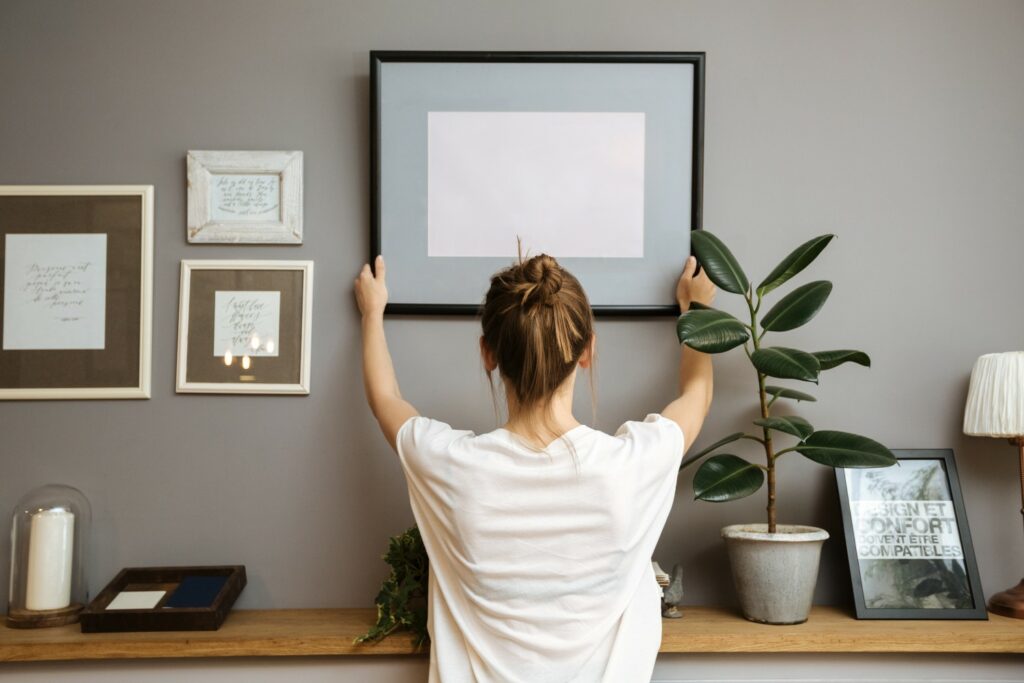
The ideal height of your picture above a chest of drawers or sideboard
Since most chests of drawers are not too wide, you should always hang only one piece of art above them. But beware: many people make the mistake of hanging their single picture at far too great a distance from the chest of drawers. The distance between your artwork and the shelf of the chest of drawers should never be more than 15 and 20 centimetres. You wonder why? Chests of drawers are often quite high in themselves. If you now also make the mistake of hanging your artwork too high on the wall, your walls will look much lower and your room will seem stifling. With the perfect distance between the picture and the chest of drawers, your walls will appear much higher and your room larger.
The ideal height of your pictures above a sofa
Because of the width of a sofa, it is quite common to hang several wall pictures at a certain distance from each other above the sofa. In this case, you should hang the pictures at eye level, i.e. about 150 centimetres high. However, many people make the mistake of hanging two pictures above their couch at far too great a distance from each other. If you have two or more pictures, the distance should not be too great, otherwise the couch or sofa will look much smaller than it actually is. Therefore, you should make sure to hang your wall pictures at a maximum distance of 5 to 10 centimetres from each other in the middle of the sofa.
You can find more ideas for creatively arranging your works, for example, on a staircase or with an abstract arrangement such as the Petersburg hanging, in our guide to designing a picture wall.
Arrange your pictures - different hangings and arrangements for your individual picture wall
Do you want to hang different types of pictures on the wall with or without a passepartout? Do you prefer it structured and straight lines? Or can your pictures hang criss-cross on the wall and you prefer a more random hanging? Whichever hanging you ultimately decide on: Different types of pictures. Motifs and colours, small or large picture frames, but also different motifs can always be combined to create a harmonious whole.
Just as you colour-coordinate your furnishings and decorations, you can do the same with your wall pictures and walls. If you often use the same or similar colours in your home, the overall picture will look much more harmonious. With white walls, of course, you can let your creativity run free. Basically, you can’t do anything wrong here and your works will always look their best in the room.
Our tip: Simply orientate yourself on the horizontal and vertical lines of the picture edges and create reference lines from there. You can either extend these imaginary lines or continue them with sensible crossings or rows. You can find out about the different ways of hanging a picture frame in our Hanging a Picture Frame – How to do it guide. A spirit level, a folding rule and a pencil can help you to draw straight lines and find the right spacing for the hanging. If you follow these rules, the result will be a particularly harmonious wall design.
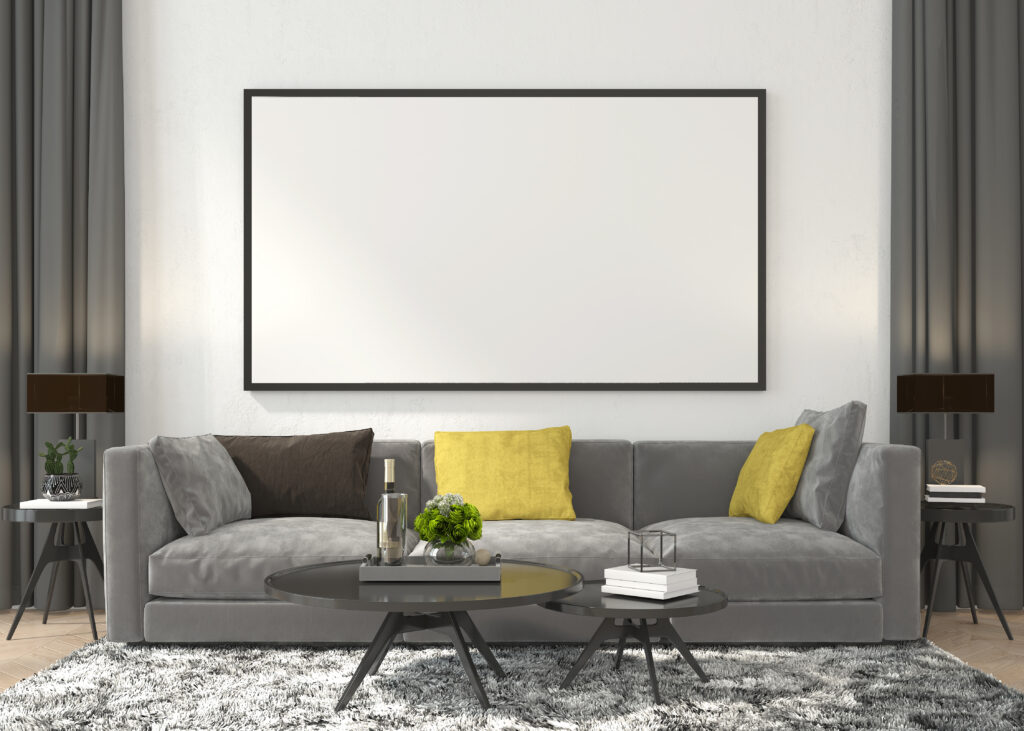
The advantages of our picture hangers
Whether canvas, alu-dibond, forex, photos or postcards: with our hanging system, any picture can be hung on the wall.
Holds anytime and anywhere
Our hangers are suitable for all wall surfaces. Whether wallpaper, woodchip, concrete, marble, tiles or plaster.
Replace pictures at any time
You want to hang up another picture? No problem! With GAEKKO, changing pictures is quicker and easier than ever before.
Simply hung up
With GAEKKO hanging pictures is child’s play. No more complicated hanging ropes, gallery rails or adhesive sheets.
Hanging pictures: Tips for the optimal height and the right arrangement
Before you hang your pictures on the wall, you should first make a template. You can cut this out of a single cardboard box the size of your wall pictures and stick it to the wall with painter’s tape in the desired hanging position, the correct distance from each other and at eye level. You should use a spirit level here so that the murals hang straight later.
With the templates on the wall, you will also get a first feel for the best way to hang your pictures on the wall and how the different picture formats interact best as a group of pictures. You can also arrange your wall pictures along an edge. The upper or lower edge of all the pictures provides the reference line for hanging.
You want to arrange several paintings at the same height? With a picture rail you can arrange several pictures in different formats next to each other and at the same height. All pictures follow a common reference line. Your paintings simply follow the frame edge of the picture rail. The picture rail is mounted once on the wall, so you only have to drill two holes in the wall.
Our tips: If this is too stressful for you, you can also spread out your works directly on your floor in a row or as an orderly chaos before hanging them up. Even with your wall pictures on the floor, you will get a first impression of how the works work together and which hanging is best suited for your pictures. When hanging your pictures later, however, make sure that you mark the exact spots on the wall and that your pictures hang at the exact height!
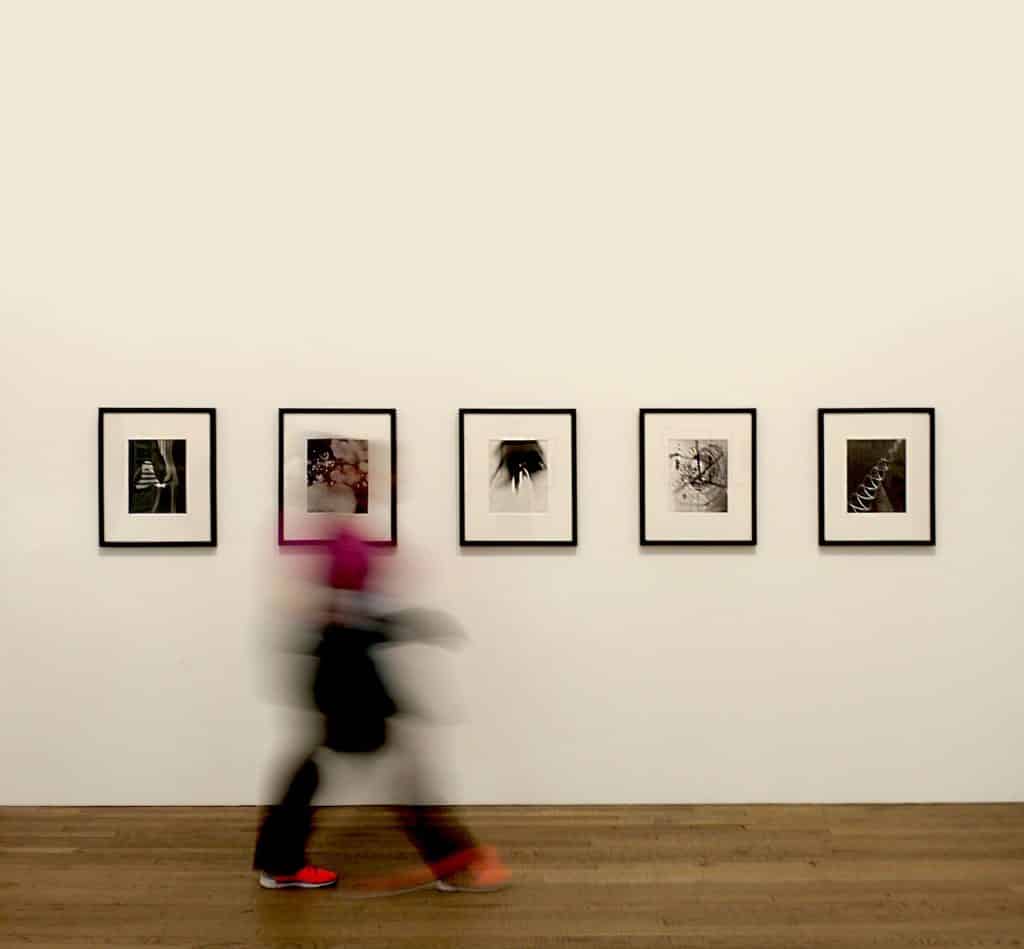
Hanging pictures: How to hang your pictures on the wall quickly and easily
You should always start with the central picture first, regardless of whether you later arrange your wall pictures as a group or hang them in a block on the wall. The other pictures are always distributed around the centre of the central picture. If you are working with templates, you can also drill holes directly through the paper for the later hanging points. Then you can remove the paper from the wall. If you need several screws or nails per picture or if you want to arrange your pictures in a row, you should also use a spirit level.
Is your wall a solid concrete wall or perhaps just simple plasterboard? Depending on the nature of the wall, you can either nail your pictures to the wall or hang them on the wall with the right dowels and screws. For lightweight pictures, you also have the option of doing without nails, screws and dowels altogether and gluing your pictures to the wall.
Further tips: Are you still looking for the right hanging for your mural? With our hangers you can glue, nail or screw your work to the wall. The size and weight of your work will ultimately determine the type of hanging on your wall. This makes it the first hanger that flexibly adapts to you, your picture and your wall. Especially with light pictures, you can completely do without drilling and stick your pictures to the wall from now on. With our hangers, you can quickly and easily design your own individual picture wall.
Hang canvas pictures at the ideal height
CanvasGAEKKO
stretcher frames and wooden frames
-in stock for immediate delivery-
Hang photos and postcards at the ideal height
PhotoGAEKKO
The adhesive picture hanger for
photos & postcards (self-adhesive)
-in stock for immediate delivery-
Hang alu-dibond and acrylic glass at an ideal height
GalleryGAEKKO
The adhesive picture hanger for aluminum prints, plexiglass & acrlic prints
-in stock for immediate delivery-
Hang posters at an ideal height
PosterGAEKKO
The adhesive picture hanger for
posters & art prints (self-adhesive and magnetic)
-in stock for immediate delivery-
Hang picture frames at an ideal height
PictureframeGAEKKO
The adjustable picture hanger
for any kind of framed pictures (adjustable horizontally and vertically)
-in stock for immediate delivery-


